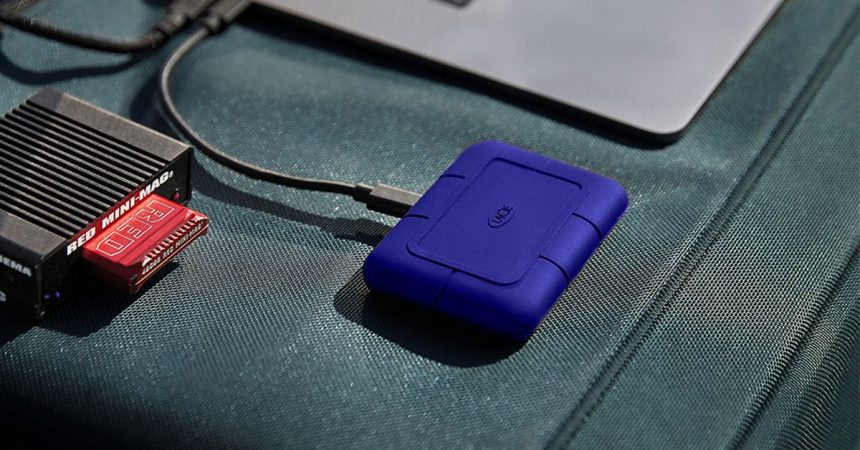The dawn of Thunderbolt 5 promised a revolution in external storage performance, with significantly faster speeds and enhanced capabilities. Following the arrival of the first Thunderbolt 5 cables and docks in mid-2024, anticipation built for compatible SSDs to unlock the full potential of this new technology. While the rollout has been slower than expected, several manufacturers like Seagate, OWC, and Sabrent have finally unveiled their Thunderbolt 5 SSD offerings, marking a pivotal moment for users eager to upgrade their storage solutions.
Seagate’s latest Rugged SSD, known for its robust design, now boasts Thunderbolt 5 compatibility, offering both performance and durability. Continuing the tradition of its predecessors, the new drive comes encased in a protective rubber enclosure, available in various colors, and can withstand drops from substantial heights and even submersion in water. This combination of speed and ruggedness makes it an appealing choice for professionals and consumers alike who require reliable storage on the go.
Other contenders have also entered the Thunderbolt 5 arena, albeit with varying degrees of availability. Sabrent, an early proponent of the technology, announced its Rocket XTRM 5 SSD, encased in a silicone sleeve for added protection. Promising impressive read and write speeds, the Rocket XTRM 5 is marketed with various storage capacities, but its release has faced delays, with pre-orders still being accepted through the company’s website.
OWC joined the ranks with its Envoy Ultra Thunderbolt 5 SSD, emphasizing its water, dust, and crush resistance alongside impressive read speeds. Initially slated for an October 2024 release, the Envoy Ultra faced supply constraints, with pre-orders now indicating a mid-January 2025 shipping date. The drive, offered in 2TB and 4TB capacities, highlights the challenges manufacturers face in meeting the demand for cutting-edge technology.
Despite the excitement surrounding Thunderbolt 5 and the year-long wait for compatible hardware, the transition hasn’t been entirely seamless. Early adopters, like PCWorld’s senior editor Mark Hachman, have encountered compatibility issues and performance bottlenecks. Hachman’s attempts to integrate a Maingear ML-17 laptop, Kensington’s Thunderbolt 5 dock, OWC’s Envoy Ultra SSD, and Acer’s Nitro XV5 displays resulted in laggy performance and underwhelming transfer speeds, highlighting the growing pains often associated with new technology adoption.
The experience underscores the complexities of integrating new hardware into existing systems, especially when multiple components are involved. While individual devices may boast impressive specifications, their interaction within a larger ecosystem can introduce unforeseen challenges. This highlights the importance of thorough testing and optimization, both on the part of manufacturers and users, to ensure a smooth transition to Thunderbolt 5 and its promised performance gains. The early adopter experience serves as a valuable lesson, emphasizing the need for patience and realistic expectations as the technology matures and manufacturers address compatibility issues.
The initial wave of Thunderbolt 5 SSDs presents a tantalizing glimpse into the future of external storage, offering significantly enhanced speeds and ruggedized designs. However, the transition is still in its early stages, and challenges remain in ensuring seamless integration and consistent performance. While the wait for Thunderbolt 5 hardware has been lengthy, the experience of early adopters suggests that further refinement and optimization are needed before the technology reaches its full potential. As manufacturers continue to address compatibility issues and streamline performance, the promise of Thunderbolt 5’s blazing-fast speeds remains a compelling prospect for those seeking the next generation of external storage solutions.



